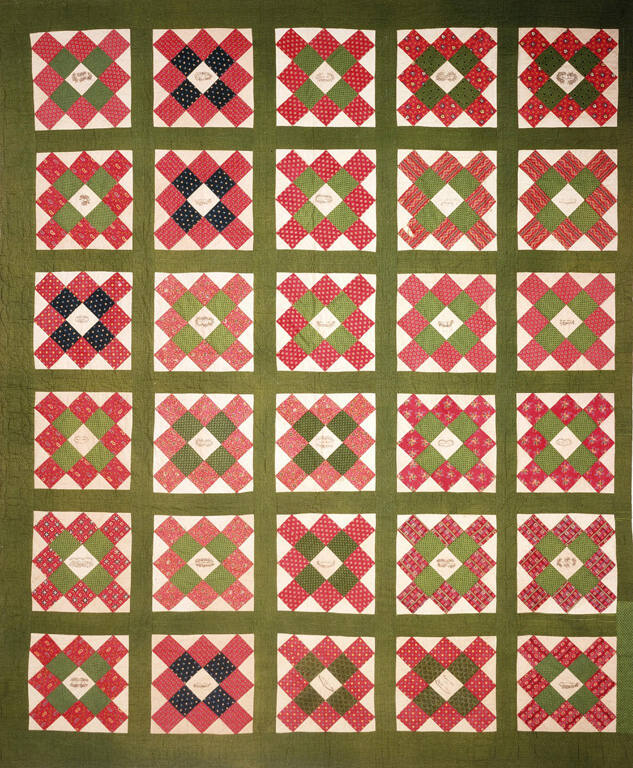
Object Details
Culture
American
Date
1848
Medium
Cotton, plain weave
Dimensions
Overall: 101 5/8 × 84 1/2 inches (258.1 × 214.6 cm)
Credit Line
Gift of Nancy Rosenthal Miller, Class of 1961
Object
Number
86.060.006
BRIEF DESCRIPTIONThe practice of making friendship and signature quilts, like this one, began in Ame(…)
BRIEF DESCRIPTIONThe practice of making friendship and signature quilts, like this one, began in America in the 1840s inspired by autograph albums and the availability of permanent inks. Many members of the Depue family and friends signed and stamped their names on the blocks for this friendship quilt. The person for whom the quilt was made is unknown. Only Ann Eliza Milnor dated her block (1848).HOW WAS IT MADE?Some friendship quilts were made by one person, but often a group of people related by family or community ties contributed blocks with signatures, and helped with the quilting. The pattern blocks were assembled from pieces of fabric stitched together. A quilt is like a fabric sandwich—the finished quilt top was hand stitched to a backing fabric, probably on a quilting frame, with a layer of batting in between.HOW WAS IT USED?Friendship quilts were given as gifts to individuals. Friendship, and signature quilts, commemorated relationships between family and friends. At a time when people were leaving their communities and moving west, these treasured quilts served as mementos of former lives. Friendship quilts are still made today, but the height of their popularity spanned the 1840s-1860. The excellent condition of this quilt suggests it was lovingly cared for and used as a bed cover only on special occasions.WHY DOES IT LOOK LIKE THIS?The major design feature of the friendship quilt is the repetition of a single block pattern repeated across the surface of the quilt. The Chimney Sweep pattern was often chosen because the central square of the block provides a space for inscribing a name or verse. Notice that on the Depue quilt names are signed and stamped in ink. In addition to the names of Depue family members, other names that appear on the quilt are Plumby, Dyer, Kroseon, Gifford, Vandagrift, and Williams. This quilt is visually striking with its combinations of red and green printed fabrics, popular colors for quilts in the mid-nineteenth century.8












